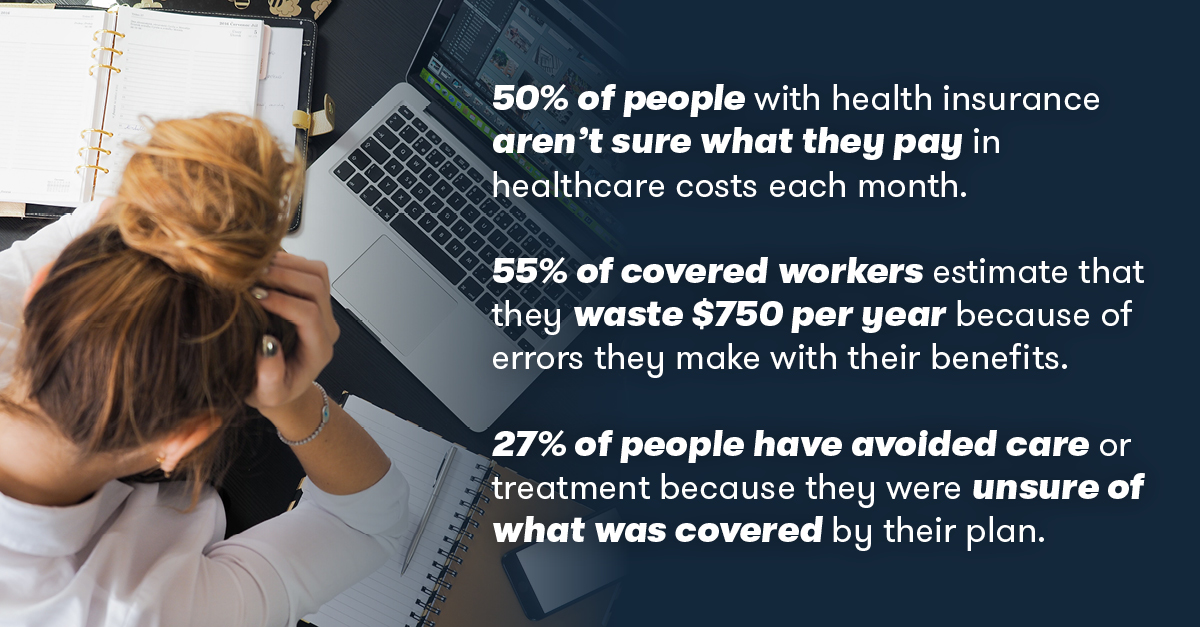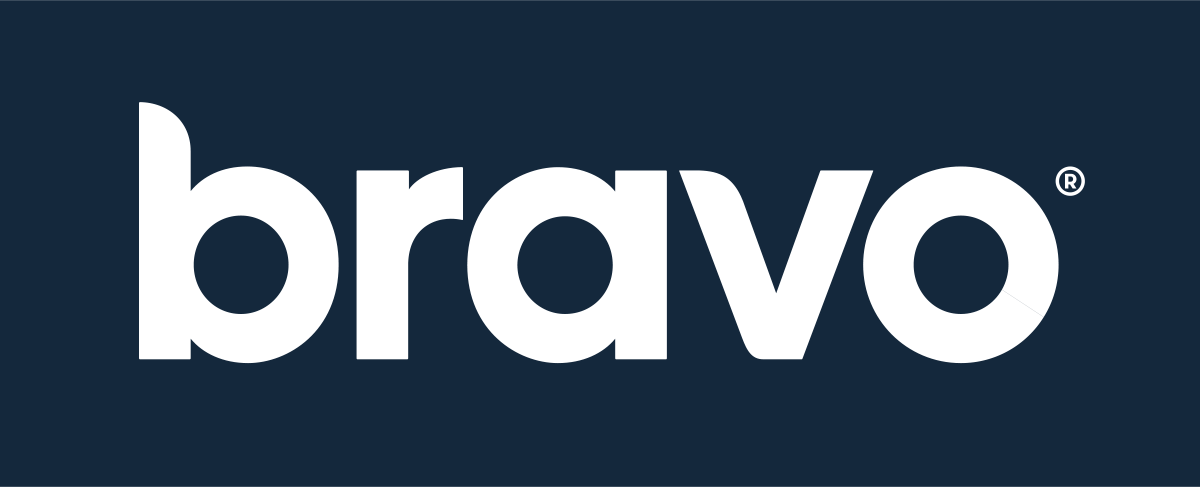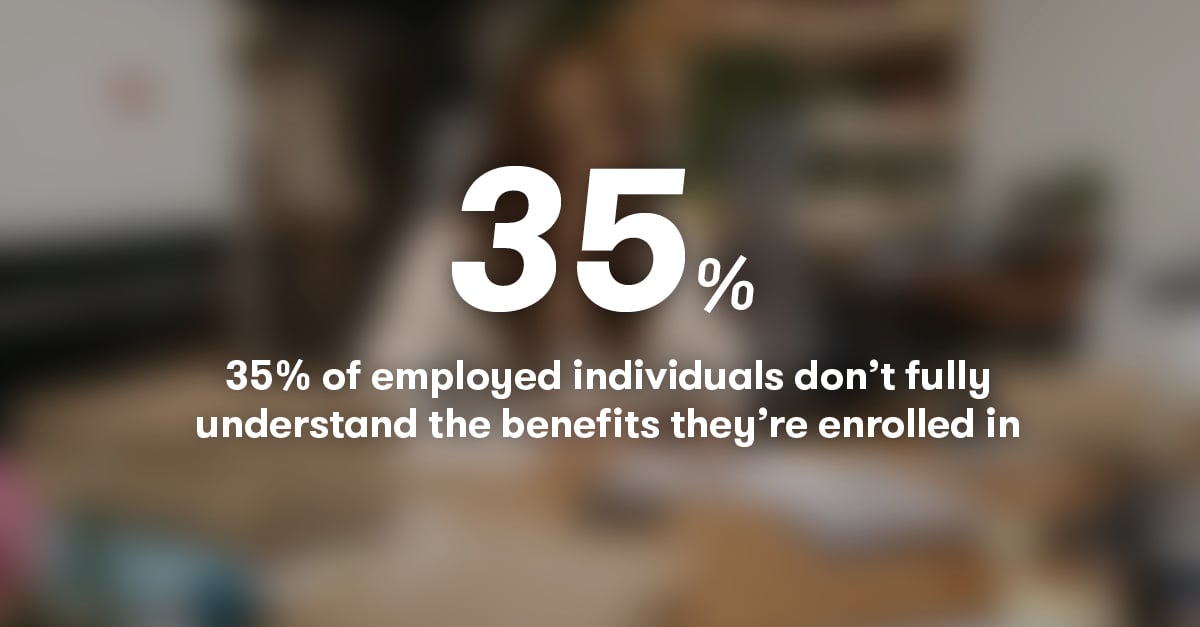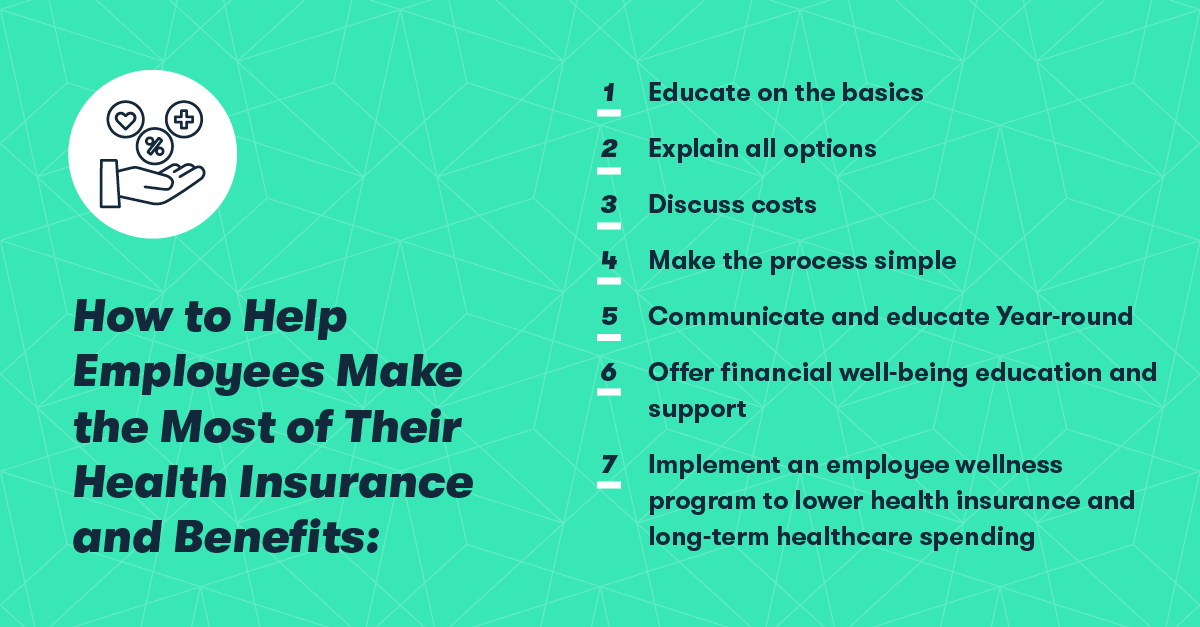Health insurance is an irreplaceable workplace benefit. It can also be incredibly complex to navigate as an employee.
When employees are left to navigate open enrollment on their own, the details behind each health insurance option can be complicated and confusing. Simply handing out a benefits pamphlet at employee orientation or open enrollment isn't enough to help employees select the right coverage for themselves and their families.
In this article, we'll cover why health insurance is important to employees, the trends and statistics related to healthcare utilization, and concrete ways employers can help employees interpret health insurance plans

The data makes it clear that employees have a hard time making decisions about their health insurance options:
- 35% of employed individuals don't fully understand the benefits they enrolled in last open enrollment. This jumps up to 54% for millennial workers.
- 50% of people with health insurance aren't sure what they pay in healthcare costs each month.
- 55% of covered workers estimate that they waste $750 per year because of errors they make with their benefits.
- 27% of people have avoided care or treatment because they were unsure of what was covered by their plan. This statistic was still significant among higher-income earners.
- Employers, collectively, can end up spending more than $230 billion a year in excess healthcare costs due to a lack of employee education on how to make the most of medical coverage.
The good news is that employees are spending more time reviewing their benefits package during open enrollment—and they are eager for education, guidance and support from their employer.
Health insurance education and awareness is the best way to ensure your employees understand their healthcare options and confidently select coverage that's right for them. Teaching employees how to be better healthcare consumers can also reduce costs for employees and employers alike.
Why is health insurance important to employees?
The main benefit of a health insurance plan for employees is protection over and support for their health, well-being, and finances.
Employer-provided health insurance should also deliver peace of mind that if they encounter a health issue, they'll have the necessary coverage to diagnose and treat it and do so without financial distress.
In reality, how Americans use (and don't use) their insurance and manage their healthcare costs is a very different picture.
Insurance and Healthcare Utilization Trends
While the pandemic was a primary cause of delayed care in 2020, a prominent reason in 2019 for delaying care was cost:
- 25% of households deferred treatment for a serious medical condition because they couldn't afford it or because of the uncertainty of the financial barrier
- An additional 8% of households put off care for a less severe condition.
This data continues to be true today: A 2021 Kaiser Family Foundation report found that nearly half of U.S. adults skipped out on health or dental care in the past year because of cost, and 29% reported medication noncompliance due to cost.
Why are healthcare costs an issue for American workers?
Simply put, unexpected spending on healthcare can threaten a family's financial stability, considering that:
- 36% of Americans don't have liquid savings to cover a $400 unexpected event.
- Nearly 70% of Americans have less than $1,000 in a savings account. 45% have zero dollars in a savings account.
- According to the Milliman Medical Index, average employee out-of-pocket costs have risen to $4,520 for a family of four (not including the employee's annual premium contributions).
This data shows how much of a burden medical costs could be for employees who use their benefits for anything beyond routine or preventive care.
How does delaying care impact healthcare costs and health outcomes?
This approach to health coverage and healthcare utilization is akin to avoiding a small leak in the house and waiting until the ceiling caves, taking a situation that could have been addressed for a few hundred dollars and turning it into a catastrophe that costs tens of thousands.
With this, employees usually find themselves in a situation of deferring care and risking major medical problems later on. Or, if they do get the care they need, they either borrow money or don't pay at all.
This approach can also have a devastating impact on employee health outcomes.
How to Help Your Employees Make the Most of Their Health Insurance and Benefits
Although it's not a silver bullet for alleviating employee healthcare costs, knowledge is power, especially in understanding health insurance coverage.
When employees better understand how to interpret health insurance plans and how they work, they become better healthcare consumers. Better healthcare consumers have more success in making the most of their benefits, getting the care they need and saving money in the process.
Here are steps you can take and build off of to help your employees make the most of their health benefits:
1. Educate on the basics.
Did you know only 6% of healthcare consumers can correctly define the terms premium, deductible, coinsurance, copays and out-of-pocket maximums and networks? Start by educating and reinforcing these fundamental health insurance concepts.
Consider surveying your workforce about their knowledge of health insurance and healthcare consumerism. From there, understand their pain points and lead with those when you educate as you discuss and offer employees health insurance.
Circle back to these health insurance and healthcare terms and concepts and how they work together regularly. Your employees need an in-depth understanding of their financial obligation before seeing the importance of shopping for healthcare.
2. Help employees understand their options.
When offering health insurance at open enrollment or to a new hire, any extra help will go a long way. To help promote healthcare literacy and more confidence in interpreting and using health insurance plans, consider creating or asking your broker for resources like:
- An informative training session to explain the foundation for understanding health insurance, the preventive benefits covered by each plan, and more.
- A cheat sheet that explains how healthcare costs are covered.
- A glossary of coverage and care terms and examples of what an individual might pay for.
3. Discuss costs employees can expect to encounter.
Most individuals only look at what they can afford every month from a premium perspective when choosing their health insurance coverage. They may think they will pay a certain amount each month for insurance, but that doesn't correlate to their total out-of-pocket exposure.
For instance, cheaper health insurance premiums might seem attractive to some, but the price difference (and savings) between different tiers of plans might not be as high as imagined. While not every example or piece of information will apply to everyone, it's crucial to increase their knowledge of relative costs.
Use examples and show the math to illustrate how individuals and families in different stages of life may utilize their insurance and how each plan impacts out-of-pocket costs.
When it comes to shopping for services, medications or products, healthcare consumers also need to know that shopping around can help them save money and get the proper care, as prices can vary by hundreds or even thousands, even if they're all in-network.
4. Make the process simple for employees.
By offering clear guidance on choosing the right health insurance coverage and ways to reduce healthcare spending, the process will seem more manageable. Consider giving employees how-to's and checklists, or direct them to resources they can use themselves. Resources may include:
- Websites that offer a free calculator to compare health plans and prescription drugs
- Cost comparison tools provided by your health insurer
- Tutorials on how to check what prescription drugs are covered or search for an in-network doctor
- Access to benefits educators
- Insight on advocacy and transparency services that can shop on an employee's behalf to find cost-effective providers and resolve claims and billing issues
5. Communicate and educate throughout the year.
When it comes to healthcare education, consistent communication is key. Demonstrating the value of shopping for care year-round—not just during open enrollment—keeps it top-of-mind for employees.
With constant communication and the right materials and resources, you can help employees become true healthcare consumers. What can you educate on? The opportunities are endless:
- Show how to compare the true cost of each plan
- Continue to talk about shopping for prescription drugs or outpatient tests
- Talk about choosing between the ER, urgent care or telemedicine
- Discuss FSAs or HSAs to manage the cost of care
6. Offer financial well-being education and support to employees.
The number of employers offering financial wellness programs is up to 46%, according to Bank of America's Workplace Benefits Report. Considering that...
- 17% of adults had significant, unexpected medical expenses last year, with a median amount between $1,000 and $1,999.
- Nearly 1 in 5 Americans has medical debt in collections.
- Medical debt is the largest single cause of bankruptcy in America.
...the need for financial counsel and support, both in connection with and independent of healthcare costs, is imperative. Many wellness vendors, health plans, and even retirement planning partners offer financial wellness programs that cover topics like saving for emergencies, paying down debt, and family planning.
7. Implement an employee wellness program to lower health insurance and long-term healthcare spending.
A wellness incentive program is a great way to help offset healthcare costs for employees and can accomplish other goals that can also lead to lower healthcare costs for them and their families in the long term, like:
- Completing a preventive care visit with their doctor.
- Maintaining or improving their biometric health.
- Getting an annual flu shot or the COVID-19 vaccine.
Plus, providing tools to guide employees to make better healthcare and lifestyle choices increases benefits utilization and reduces healthcare costs for your company.
Choose a reward model that employees will value, like a premium discount that increases their take-home pay and allows them to save money on their own, or a deposit into a health savings account to ensure they have money to use for their healthcare.
Initiate a shift toward prevention and even lower healthcare costs with a comprehensive employee wellness program that integrates with your existing health and well-being benefits. Learn more about our approach and how we help employees improve and maintain their health and close gaps in care.
If you're eager to learn more on this topic, listen to this podcast episode where we sat down with Craig Froude, CEO at medZERO, to understand:
- How big of an issue medical debt is for the average American
- How employers can help reduce this burden, ensure employees access care, and ultimately build a stronger, healthier workforce.



